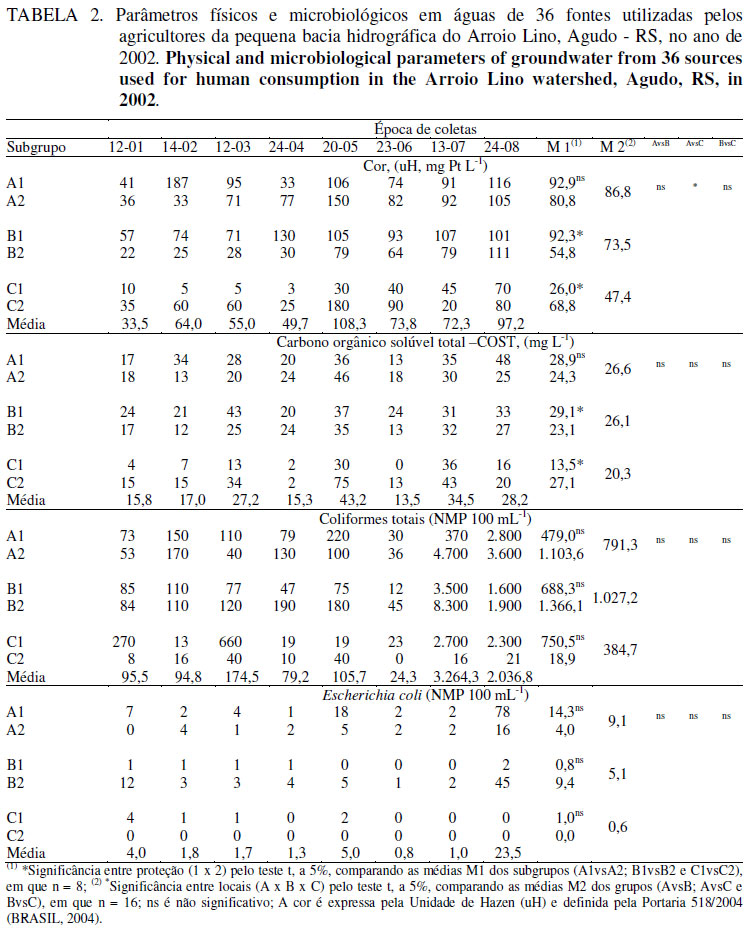In rural areas, water for human consumption is often captured by insecure systems. The objective of this work was monitoring some parameters of the quality of groundwater taken from sources, pointing out their position in the landscape and the presence of physical protection. For this , 36 sources in the watershed of Arroio Lino, a rural area of Agudo, RS, Brazil, were sampled and classified according their physical protection and position in the landscape. A monitoring program, from January to August 2002, was carried out to analyze the following parameters: pH, color, total soluble organic carbon - TSOC, N-NO3, N-NH3 and total phosphorus, E. coli and total coliforms. The parameters values changed with the time of collection and were often above the Maximum Allowable values provided by the Brazilian Ministry of Health. A rudimentary protection was efficient to the PT of the sources located in high levels; however it has present discrepant results for the low part of the landscape, considering the parameters TSOC e N-NO3. The collective drained source, system recommended by the official technical assistance, was the most efficient to avoid contamination by Escherichia coli, restricting also the levels of total coliforms, total phosphorus and N-NO3 as compared to the individual sources. The sources position in the landscape and the presence of a rudimentary physical protection can be employed as a partial criterion to accept that a water source be used for collecting water.
rural supplies; soil management; health public; water contamination




